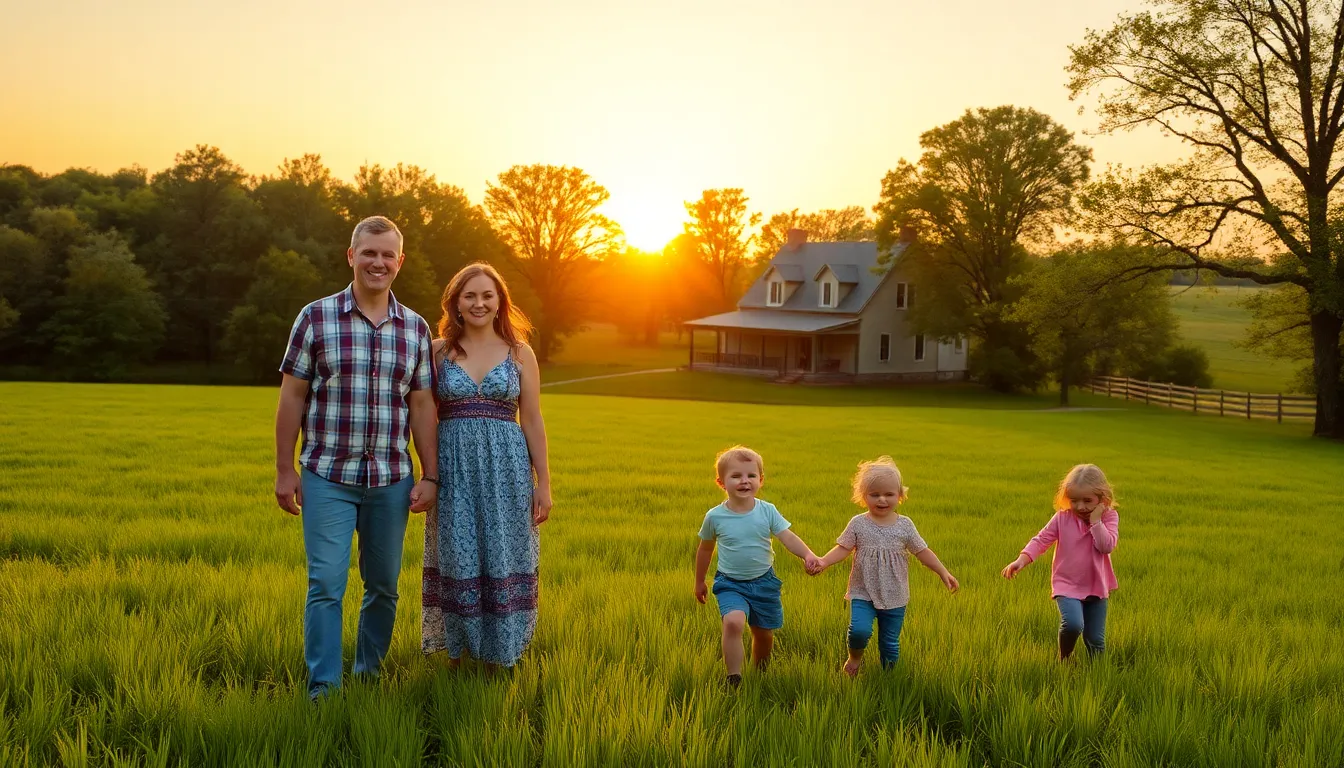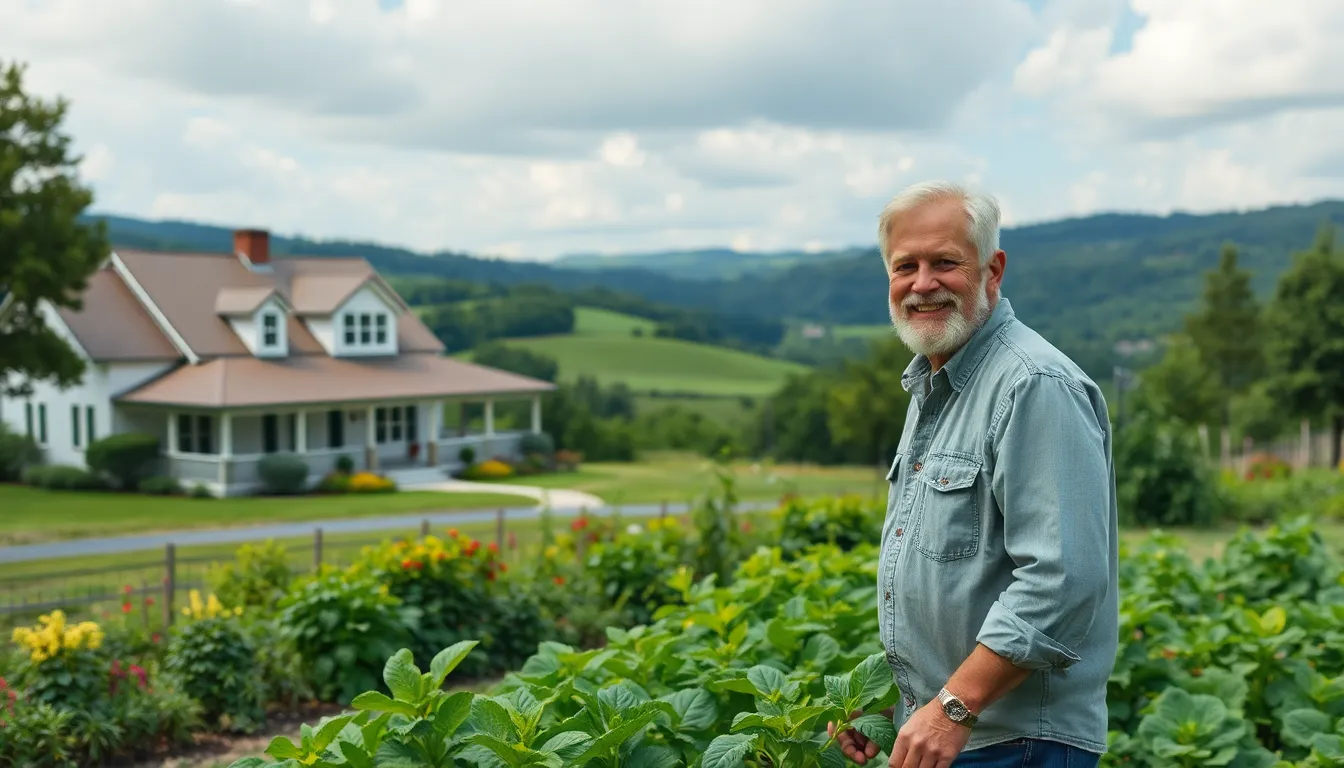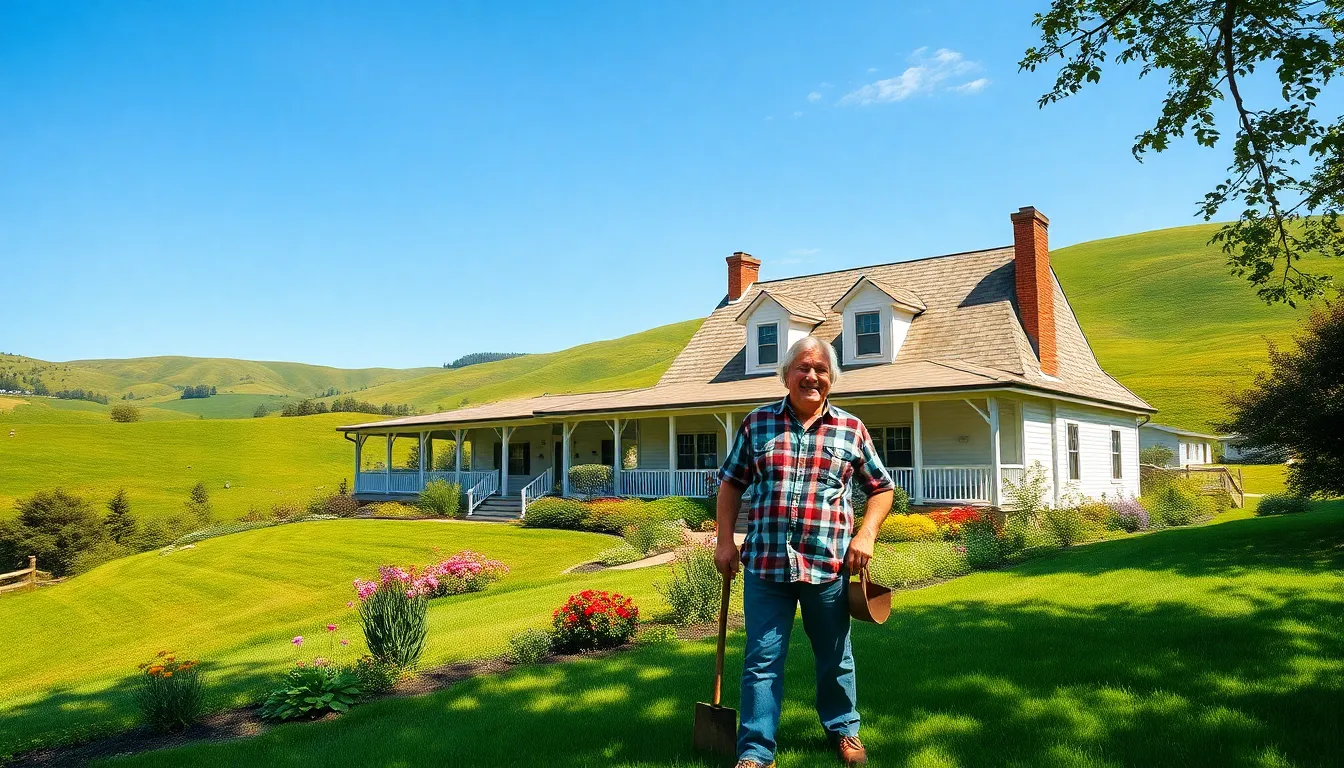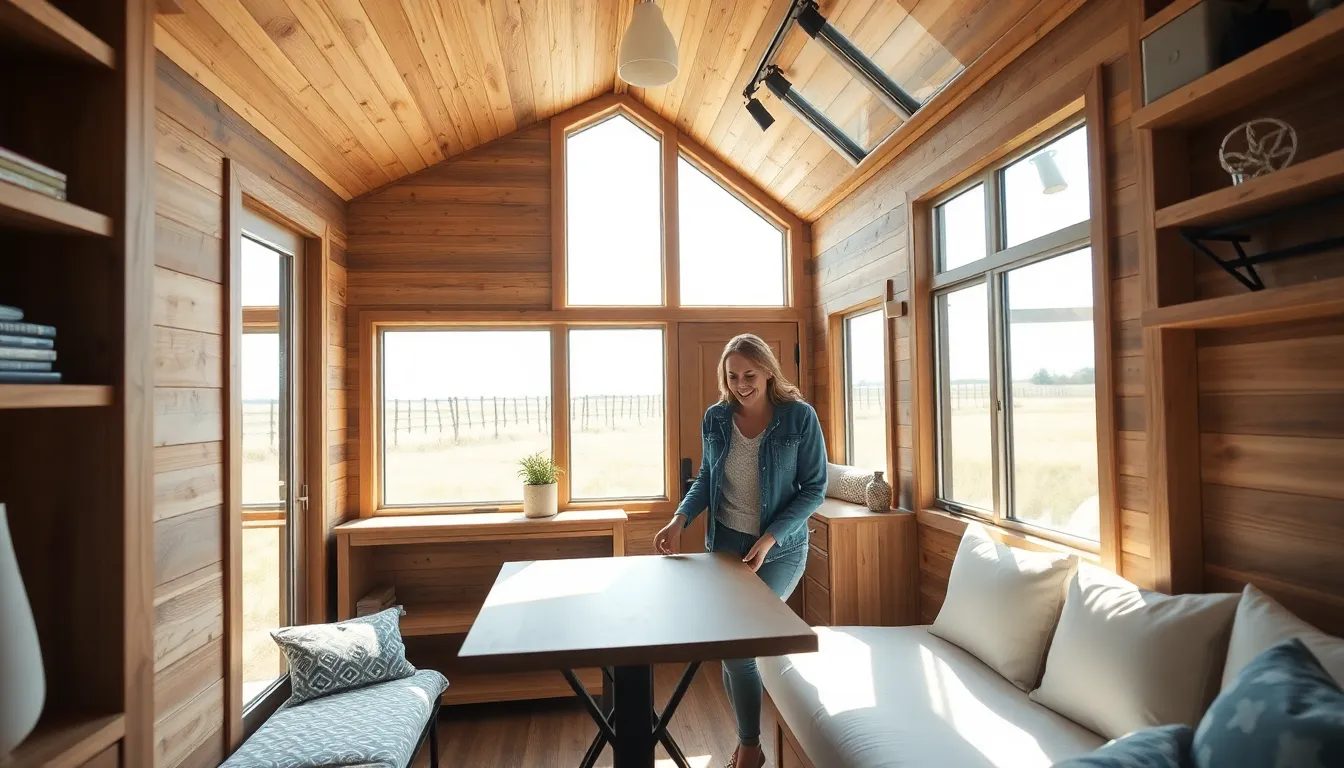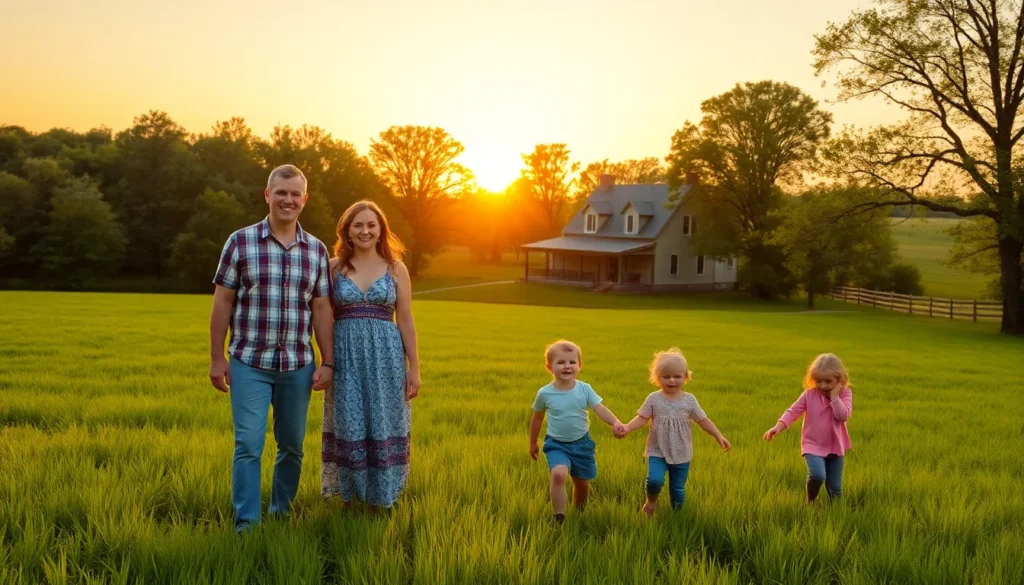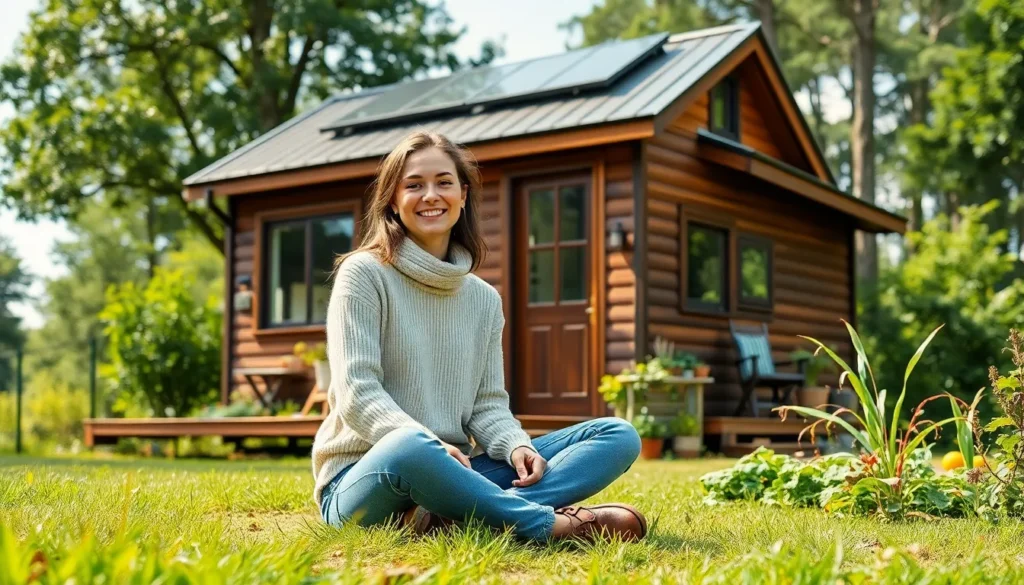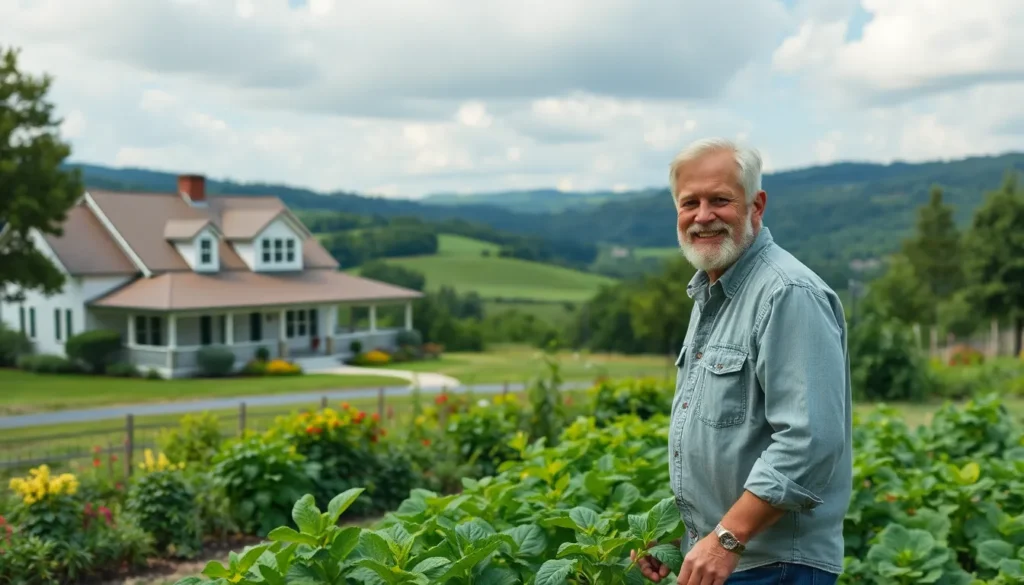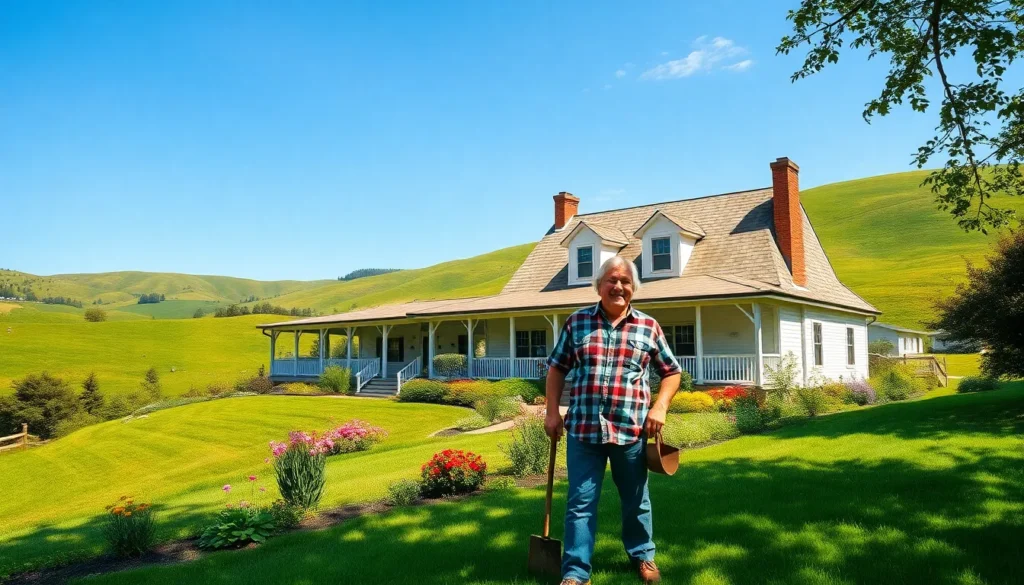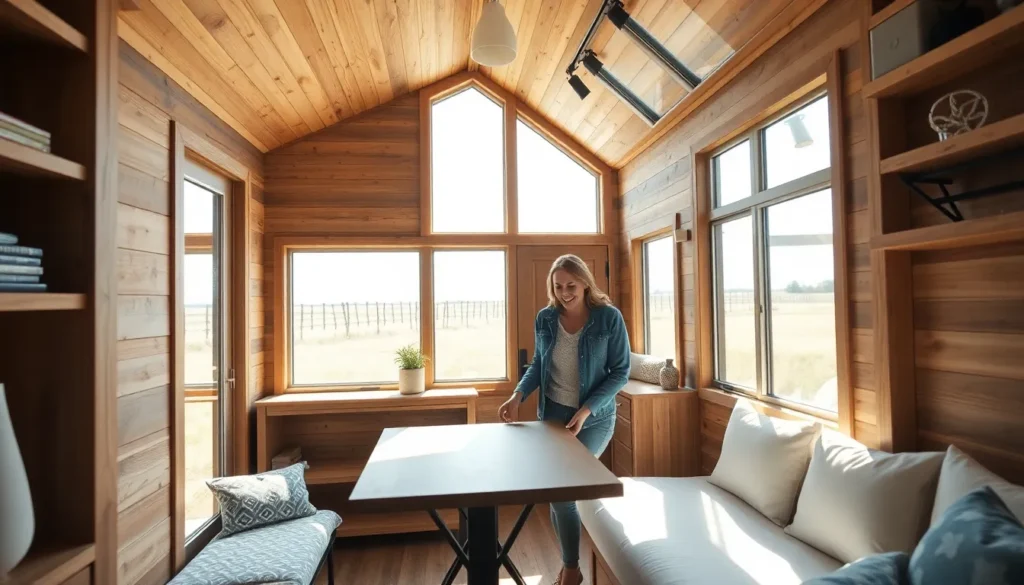Imagine trading city traffic for serene sunsets and the hustle of urban life for the gentle rustle of cornfields. Rural retirement living offers a refreshing escape where neighbors wave from their porches and the only rush hour involves a leisurely stroll to the local farmers market. It’s not just a change of scenery; it’s a lifestyle that promotes peace, connection, and a touch of adventure.
With fresh air and wide-open spaces, retirees can finally embrace their passions—whether that’s gardening, fishing, or perfecting the art of napping. Plus, who wouldn’t want to swap crowded restaurants for cozy diners where everyone knows your name? Rural retirement isn’t just a place; it’s a community that welcomes you with open arms and maybe a slice of homemade pie. So grab your walking stick and let’s explore why this charming way of life might just be the perfect fit for the next chapter.
Table of Contents
ToggleOverview of Rural Retirement Living
Rural retirement living offers an enticing escape from the fast pace of urban life. Many retirees find peace in the simplicity and beauty of nature. This lifestyle allows individuals to savor slower afternoons, engage more deeply in community events, and pursue hobbies without time constraints.
Community connections form the heart of rural living. Engaging with neighbors fosters relationships that often lead to lifelong friendships. Local markets provide fresh produce, while cozy diners serve as gathering spots for shared meals and stories. These interactions contribute to a sense of belonging that many retirees cherish.
Affordable housing options enhance the appeal of rural areas. The cost of living tends to be lower compared to metropolitan regions, making it accessible for those on a fixed income. Retirees can find spacious homes or scenic cottages that align with their desired lifestyle and budget.
Health care access plays a significant role in choosing a retirement location. Many rural areas maintain essential medical facilities and services, ensuring retirees can meet their health care needs. The combination of close-knit communities and available care creates a reassuring environment for older adults.
Engaging in outdoor activities remains a highlight of rural living. Retirees often enjoy hiking, gardening, or fishing in local lakes and parks. Nature’s tranquility offers an ideal backdrop for relaxation and rejuvenation.
Rural retirement living presents a myriad of advantages, from affordability to enriching community ties. Exploring this lifestyle leads many to a fulfilling, serene chapter in their lives. Choosing to retire in a rural setting opens doors to both leisure and lasting connections.
Benefits of Rural Retirement Living
Rural retirement living offers numerous advantages for those seeking tranquility and connection in their golden years. This lifestyle promotes well-being while fostering meaningful relationships within tight-knit communities.
Affordability
Affordable housing options characterize rural areas, making them attractive for retirees on fixed incomes. Lower property taxes and overall living expenses further enhance financial security. Many rural communities provide budget-friendly amenities, allowing retirees to stretch their savings. Choices, such as cozy cottages or modest homes, cater to various preferences. They often prioritize value while ensuring comfort, creating an appealing atmosphere for relaxed living.
Peaceful Environment
Peaceful environments define rural retirement living, promoting a calming atmosphere. Nature surrounds retirees, offering scenic views, fresh air, and a slower pace. Activities such as morning walks or stargazing become daily pleasures. Access to parks or gardens encourages outdoor socialization, enriching lives. Rural areas also reduce noise and traffic, allowing for uninterrupted relaxation. Embracing this serene lifestyle often leads to improved mental and physical health for retirees.
Challenges of Rural Retirement Living
Rural retirement living presents certain challenges that retirees must navigate. These challenges can impact the overall experience significantly.
Access to Healthcare
Accessing healthcare remains a critical concern for many retirees. Rural regions often lack nearby hospitals and specialty services. Many retirees may face long travel distances to receive necessary medical care. Transportation options may also be limited, making visits more difficult. Telehealth options can be beneficial, but not all services are available remotely. Residents must evaluate local healthcare facilities to ensure they meet their needs effectively. The quality of care can vary, so researching providers is essential before relocating.
Limited Social Activities
Limited social activities can contribute to feelings of isolation. Smaller communities typically offer fewer organized events and recreational options. Many retirees find it challenging to engage in hobbies or meet new friends due to lack of variety. Isolation can affect mental health and well-being, making social connections important. Searching for local clubs, classes, or community organizations may help enhance social opportunities. Staying active in the community fosters relationships, which are vital for a fulfilling retirement experience.
Choosing the Right Location
Identifying the ideal location for rural retirement living involves several critical factors. Proximity to essential services such as healthcare facilities plays a significant role. Retirees often prioritize areas with accessible medical care, ensuring peace of mind. A strong sense of community can support social interaction and friendship. Neighborhoods with active clubs or organizations enhance social engagement.
Affordability is another key factor, with lower housing costs and taxes in rural areas being particularly appealing. Evaluating nearby amenities like grocery stores, parks, and entertainment options can also contribute to quality of life. Nature enthusiasts often look for locations surrounded by outdoor activities, such as hiking trails and fishing spots.
Weather conditions affect lifestyle; many retirees prefer moderate climates that allow for year-round outdoor enjoyment. Evaluating crime rates and overall safety is crucial for a secure living environment. Public transportation availability can ease mobility challenges, especially for those without personal vehicles.
Lastly, visiting potential locations before deciding helps gauge community atmosphere. Engaging with local residents provides firsthand insight into daily life. Assessing available resources, such as libraries and recreational centers, can further influence the decision. Gathering this information creates a well-rounded picture of rural living options, allowing retirees to choose a location that aligns with their lifestyle aspirations and practical needs.
Tips for a Successful Rural Retirement
Explore local resources for healthcare. Proximity to reliable medical services greatly enhances peace of mind. Seek out nearby hospitals, clinics, and specialists to ensure prompt access to care.
Engage with the community to build connections. Participating in local clubs, classes, or events fosters friendships and reduces feelings of isolation. Many rural areas offer opportunities to join gardening, art, or book clubs.
Consider the affordability of housing options. Lower property taxes and living expenses contribute to financial security. Evaluate different neighborhoods to find affordable and comfortable living arrangements.
Utilize local amenities for added convenience. Grocery stores, parks, and recreation centers enhance everyday life. Access to outdoor activities, such as hiking and fishing, promotes relaxation and well-being.
Research transportation options carefully. Limited public transport might necessitate a personal vehicle, which allows greater mobility. Evaluate how transportation impacts daily routines and social engagements.
Investigate climate conditions to ensure personal comfort. Weather can significantly influence lifestyle activities, so choose a location that aligns with preferences. Some may prefer milder climates while others enjoy distinct seasons.
Stay open to new experiences. Embracing a slower pace of life offers ample time to pursue personal passions and hobbies. Exploring local traditions and events enriches the overall retirement experience.
Visit potential retirement locations beforehand. Engaging with residents offers invaluable insights into daily life. Personal interactions can reveal the strengths and challenges of each community.
Prioritize safety by researching crime rates. Understanding the local safety landscape better prepares retirees for their new environment. A secure neighborhood contributes to overall peace during retirement.
Conclusion
Rural retirement living offers a unique blend of tranquility and community that many retirees find appealing. The slower pace and natural beauty provide a refreshing escape from urban life, allowing individuals to focus on personal passions and meaningful relationships.
While challenges like healthcare access and social engagement exist, proactive retirees can navigate these hurdles by connecting with local resources and communities. Embracing the lifestyle can lead to a fulfilling retirement filled with leisure, adventure, and lasting friendships.
Choosing the right rural location can enhance the overall experience, making it essential to consider factors like affordability and community engagement. For those ready to embark on this new chapter, rural living can truly be a rewarding choice.



